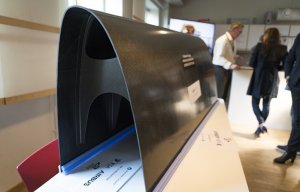
Aerospace potential for graphene
New nanofibres with excellent electrical conductivity, corrosion resistance and specific surface area.

10th June 2021
Innovation in Textiles
|
Burgos, Spain
Grupo Antolin – the manufacturer of one in every four car headliners made worldwide – is studying the potential of carbon nanofibres to improve the efficiency, durability and cost of critical components for next-generation hydrogen fuel cells.
The company, headquartered in Burgos, Spain, says it aims to make a solid contribution to the development of a key technology to make electric mobility more cost-effective efficient, and accessible,
Hydrogen fuel cell vehicles cause no exhaust emissions, only high purity water, allow refuelling as quickly as petrol-fuelled cars and can achieve similar range levels, Grupo Antolin points out.
It has been working for a number of years on the development of processes for producing carbon nanofibres with optimised properties for different industrial applications in various sectors. The result has been new nanofibres with excellent electrical conductivity, corrosion resistance and specific surface area, making them ideal for application in the electrodes of the electrochemical cells that constitute the hydrogen fuel cell systems.
In this application, the carbon nanofibres serve as a physical support for platinum nanoparticles that act as the catalyst for certain chemical reactions. Nanofibres allow the amount of platinum needed to be reduced and significantly improve the durability of the electrodes, as well as the overall efficiency of the system.
Among the different types of hydrogen fuel cells developed so far for automotive applications, those based on polymeric electrolyte protonic exchange membranes (PEMFCs) currently have the most potential due to their high-power density and operating range. In this type of system, the set formed by the electrodes and the polymeric membrane that separates them in each cell is called an MEA (membrane electrode assembly), an essential component of the system in terms of final performance.
Grupo Antolin is now focused on combining the potential of its carbon nanofibres with an appropriate deposition process so that it can be applied in the manufacture of MEA devices.
“So far, we have achieved very promising results in laboratory testing, generating MEA devices with yields, in terms of electrical power, comparable to those marketed, and we have achieved this using half the platinum and with degradation levels ten times lower after the same operating cycles,” said innovation director Javier Villacampa.
The company is furthering this research in collaboration with several national and European institutes and universities, in order to modify the surface properties of nanofibres and optimise the processing technology to generate MEA systems.

Business intelligence for the fibre, textiles and apparel industries: technologies, innovations, markets, investments, trade policy, sourcing, strategy...
Find out more